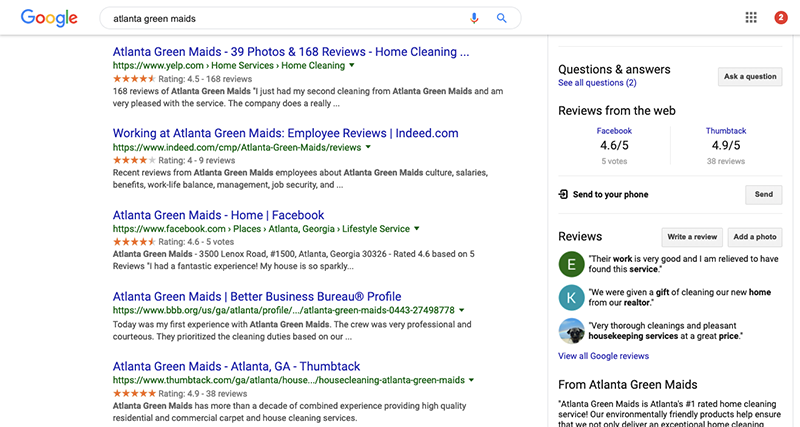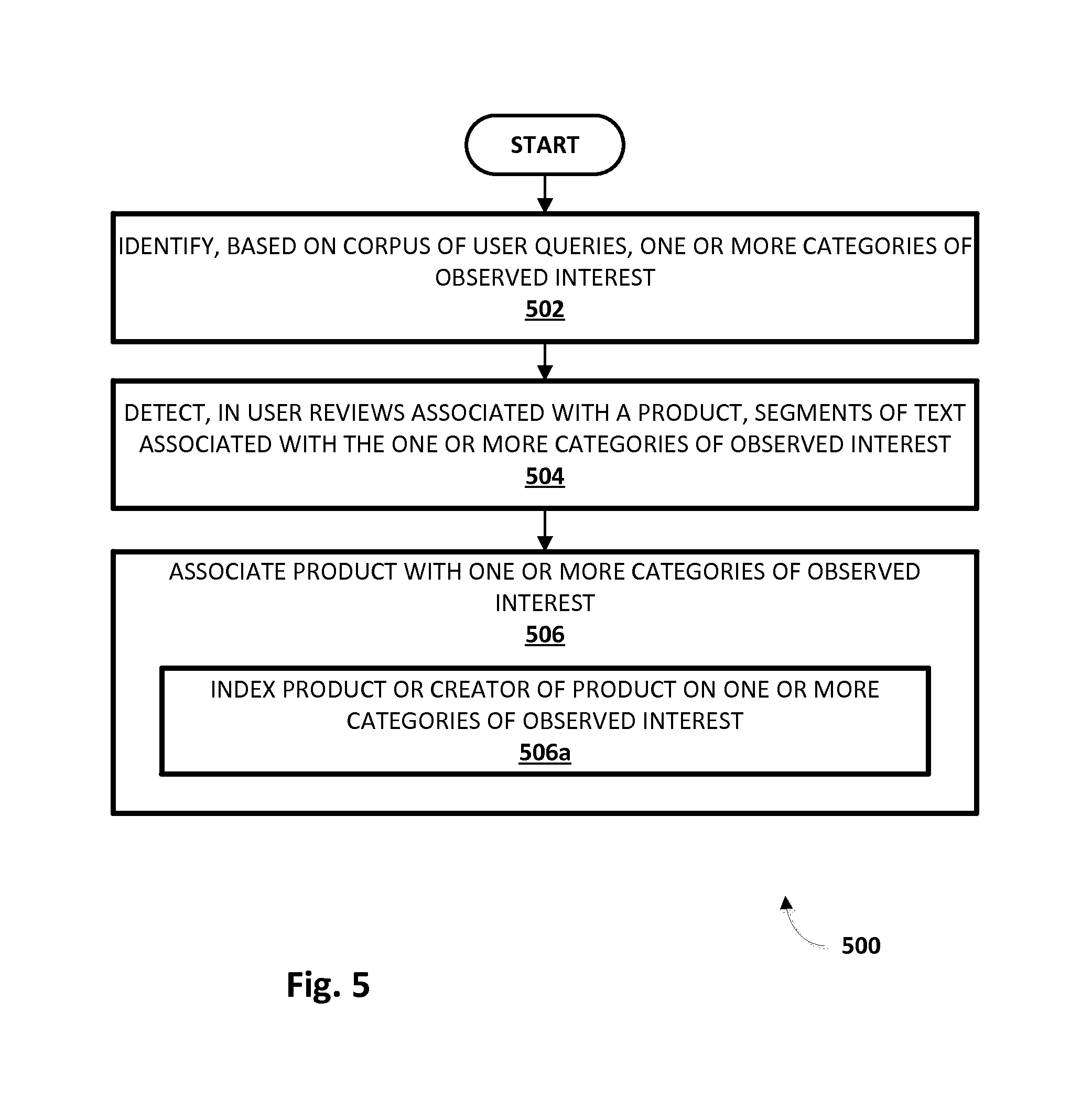It’s been known for some time that Google looks at reviews for long tail information and that reviews with that information would lead to Google showing local listings for those terms. In addition to the Local pack and Map reuslts, Google’s search results are packed with review sites and content.

The Role Of Online Reviews In Search Marketing
We also have known that it wasn’t just reviews at Google that were used to expand Google’s understanding. Google is clearly looking at reviews at multiple sites across the web to better understand any given business and using those 3rd party reviews to increase a business’s visibility in search.
So it should come as no surprise that a patent was granted to Google that details some of the ideas and architecture used in that process. Google search expert Bill Slawski did a great job covering this patent from the larger entity point of view.
These days the Google Knowledge Graph and the entities within it have grown well beyond the Places shown in Google search and Maps, but Local was the origin point for all things related to the Knowledge Graph. Local has always been the test ground and often the first to roll out features that are then applied more broadly to other entities.
That is no more true than in the online review space and the ability of review content to influence Google search results.
So I wanted to revisit this new patent with a purely local perspective as it confirms much of what we have learned about reviews over the past decade. This approach will help you understand the role online reviews play in your search marketing.
Let’s take a deep dive into the patent: Analyzing user reviews to determine entity attributes
The Big Picture Of Google’s Patent
Various techniques may be used to classify individual user reviews and/or portions thereof (e.g., paragraphs, sentences, phrases, etc.) as related to a particular entity. Descriptive segments of text, such as entity names/aliases, “categories” (explained further herein), nouns, adjectives, and so forth, may be extracted from the classified portions using various natural language processing techniques.
Descriptive segments of text may then be associated with entities based on classifications of respective portions of user reviews from which the descriptive segments of text were extracted.
Translation: Using natural language processing, Google parses all review content in an effort to understand what place (or person & thing but I am focusing on the local side) the reviews apply to, as well as what categories and characteristics can be extracted from the review to better understand the place.

What does Google do with this content?
In some implementations, an entity may be indexed (in some instances, further indexed or reindexed) in a database based on one or more descriptive segments of text that have been associated with the entity using techniques described herein.
In various implementations, the one or more signals may include a frequency of the extracted descriptive segment of text across the corpus of user reviews.
All of these categories, things and descriptive terms in the reviews get stored and associated with the entity to which they refer. And the frequency of each of these references are calculated.
Where does Google look for review content?
User reviews may be gathered from one or more of blog or social network postings, emails, articles written for websites or for printed publications such as magazines or newspapers, postings made to a user review section of an online vendor or marketplace, or even user reviews submitted to various existing user review clearinghouses.
Google looks everywhere for review content.
The whole of the online world is Google’s oyster and that is true particularly in the review space. Google is not limited to just Google reviews or general review sites for this content. They will look at blogs, magazine or newspaper articles for review content.
What is curious about this statement in the patent is that Google also notes that they consider email to be fair game as a place to find reviews. Oops.
We first saw proof of this far ranging look at content in Google Maps as far back at 2010, as Google was scraping blogs and rolling the content into the review sections of Google Places. What at the time were rudimentary techniques would ultimately be rolled up into the Knowledge Graph and leveraged by their machine learning and AI processes.
How does Google categorize this content?
Part 1
Various classification mechanisms may be employed to determine which entity or entity type a user review or portion thereof describes
In some implementations, categories of predicted interest may be based on so-called “labeled” navigational queries that may be predicted as being logical categories in which users may have interest. For example, users may operate graphical user interface elements (e.g., as selections of a drop down menu) representing categories of predicted interest to browse through products of potential interest.
Google looks at the navigational menus on a site as proxies for categories for the content. At Local U, we have long spoken about the need for effective and hierarchical site architecture to help Google understand your site. This adds one more compelling reason – so Google can not only see the content but categorize review content to properly understand it vis a vis your business.
Part 2
Categories of observed interests, by contrast, may be determined, e.g., by category engine 122, based on patterns observed in user activity, such as among a plurality (or corpus) of user queries. For example, and continuing with the online marketplace of apps example, multiple users may search for apps using the same or similar terms or phrases. If sufficient users submit queries containing a particular word or phrase (or similar variations thereof), then category engine 122 may deem those words or phrases to constitute a category of observed interest, and may update index 124 accordingly.
I want to emphasize and shorten that statement to help clarify: Categories of observed interests…may be determined,.. based on patterns observed in user activity, such as among a corpus of user queries.
I.E. Google is using searchers’ query frequencies to learn what categories humans use in looking for this information. One presumes that this is not just at online marketplaces but at Google search as well. Queries that have enough frequency may then be used to categorize the review content as it relates to the business.
Does Google use this information for ranking?
In some implementations, descriptive text association engine 128 may determine a score, strength of association and/or other quantitative measure to be assigned to associations between descriptive segments of text and entities. For example, if a particular descriptive segment of text (e.g., category, entity name/alias, noun and/or adjective) is found frequently across a corpus of user reviews, it may be strongly associated with a particular entity or entities.
So, does Google use this data for ranking?
Well, not exactly. The frequency of these terms are counted, a score is determined and this information may become strongly associated with a particular entity.
In other words, this information becomes not just trusted and scored but is used to broadly expand Google’s understanding of the local business. It functions like a category in that sense and can expand the searches on which a business is shown.
You can see this demonstrated in the local search for “wedding bands”. Wedding bands is not a category in Google’s list and yet the phrase returns search results and shows that Google is cognizant of that phrase’s relevance to the local businesses. In this specific case, these locations are more relevant to that phrase and are thus shown.

How do negative reviews affect ranking?
Suppose initial user reviews for a sophisticated camera are largely positive, but are provided by a small base of camera-savvy users. As the sophisticated camera is reindexed using descriptive segments of text (using techniques described herein), a larger base of users may be exposed to the sophisticated camera, but those user may be less savvy, and may find the sophisticated camera difficult to use. They may post negative reviews, which may cause further reindexing and even weakening of strengths of association between the sophisticated camera and the descriptive segments of text.
Negative reviews about a given characteristic of the business doesn’t punish a business per se. But it appears that the attribute will become less strongly associated with the business.
So if Barbara Oliver Jewelry got some negative reviews (god forbid as I would be on the phone for a week talking her down) about wedding bands, she would be less likely to show based on the strength of the association between wedding bands and her business.
6 Takeaways For Reviews And Google Search Rankings
- Google is using review content to better understand your business and what it does.
- The more reviews the merrier as it provides greater variety of phrases as well as repetitive phrases that can broaden the search terms your business shows on.
- These reviews can be anyplace on the web and in any form. Not just Google, not just the review sites but in articles and blog posts and even your own site.
- Your own (1st party) reviews are as valuable as Google reviews in this context.
- It makes sense (using a feature like GatherUp’s Auto-Tagging) to place those reviews on your product and service pages so that Google can use your navigation to better classify the review content and develop a deeper understanding of your business.
- Don’t limit yourself to just getting Google reviews. Get online reviews where your customers want to write them and where they will help your business.

Comments are closed.